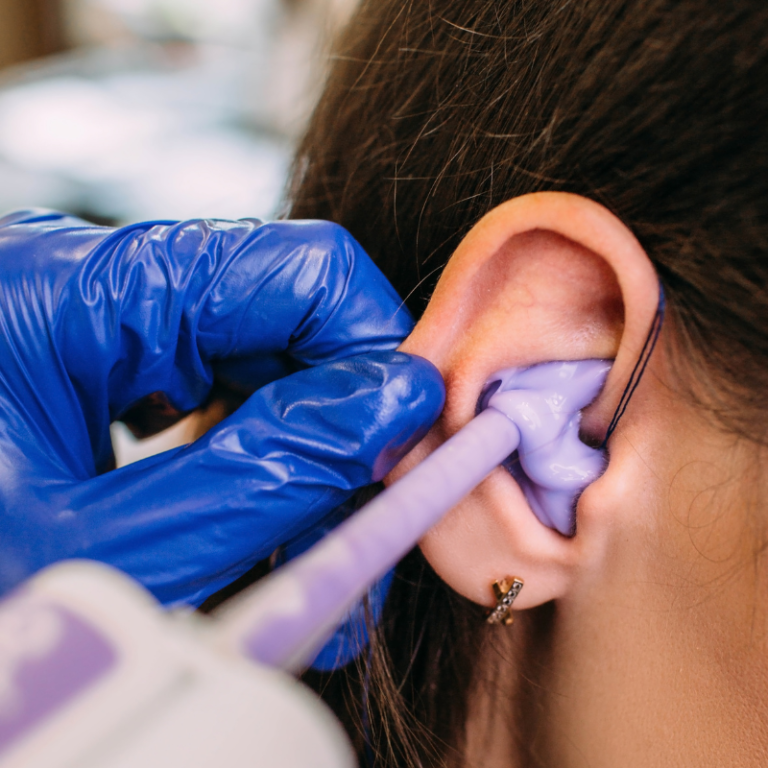
Custom earplugs
Made from impressions of your ear canal for a personalised, comfortable fit, superior noise reduction and hearing damage, whether you’re at work or play.
Your hearing is extremely delicate and vulnerable to damage from loud noises. Even brief exposure to excessive noise levels can permanently and irreversibly harm the inner ear hair cells critical for hearing. Wearing proper hearing protection like earplugs or ear defenders in noisy environments is essential to prevent this kind of permanent hearing damage.
Regular hearing tests are also important for monitoring your hearing health over time and detecting any issues early before significant deterioration occurs. Untreated hearing loss has been linked to increased risks of cognitive decline, dementia, and other health issues.
Combining consistent use of hearing protection with routine screenings is vital for safeguarding your hearing abilities and overall well-being long-term.

Noise-induced hearing loss (NIHL) is caused by repeated exposure to excessive noise levels or even brief exposure to a sudden loud noise, such as an explosion. There are tiny hair cells in our ears which transmit signals for the brain to interpret as sound. When these are damaged by pressure waves (sound waves), the transmission of signals from the inner ear to the brain is also affected, so your hearing deteriorates.
The damage caused to the hair cells in your ears is permanent, which means the hearing loss is irreversible. However, it can be prevented with good quality hearing protection. Loud working environments used to be a primary contributor to NIHL, leading to the introduction of the Control of Noise at Work Regulations 2005. Nowadays, recreational activities can be a more significant cause of noise-induced hearing loss.
Noise levels are measured in decibels (dB). Exposure to loud noises can lead to permanent hearing damage, and the risk increases with both the decibel level and duration of exposure. Here are some key points about how loud is too loud:
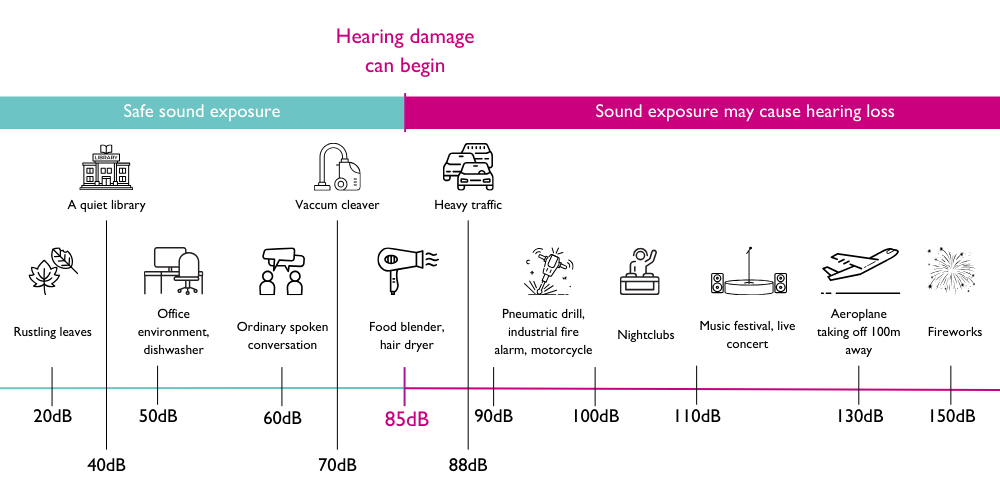
Both the loudness and duration of noise exposure matter for protecting your hearing health.
It’s important to protect your ears in various situations, including water sports, during sleep, at concerts, in the workplace, and with activities such as shooting or motorsports.
Motorsports, and shooting activities often involve loud noises that can harm your hearing over time.
Prolonged exposure to noise at concerts, and in the workplace can also cause hearing loss.
Identifying these scenarios and taking proactive measures to safeguard your hearing is crucial for maintaining auditory health.
There are several types of hearing protection. Earplugs are one of the most common and effective. They are inserted directly into the ear canal to block noise. At The Hearing Care Partnership, we offer a range of hearing protection solutions tailored to suit different needs and environments.

Made from impressions of your ear canal for a personalised, comfortable fit, superior noise reduction and hearing damage, whether you’re at work or play.
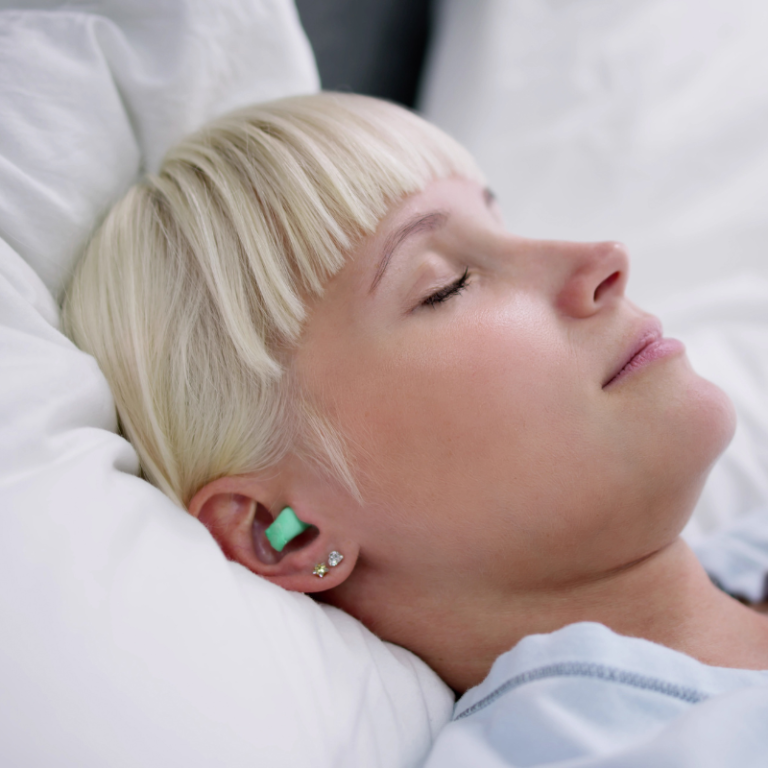
Ensure a peaceful night’s rest without disturbances with these comfortable earplugs designed for sleeping.
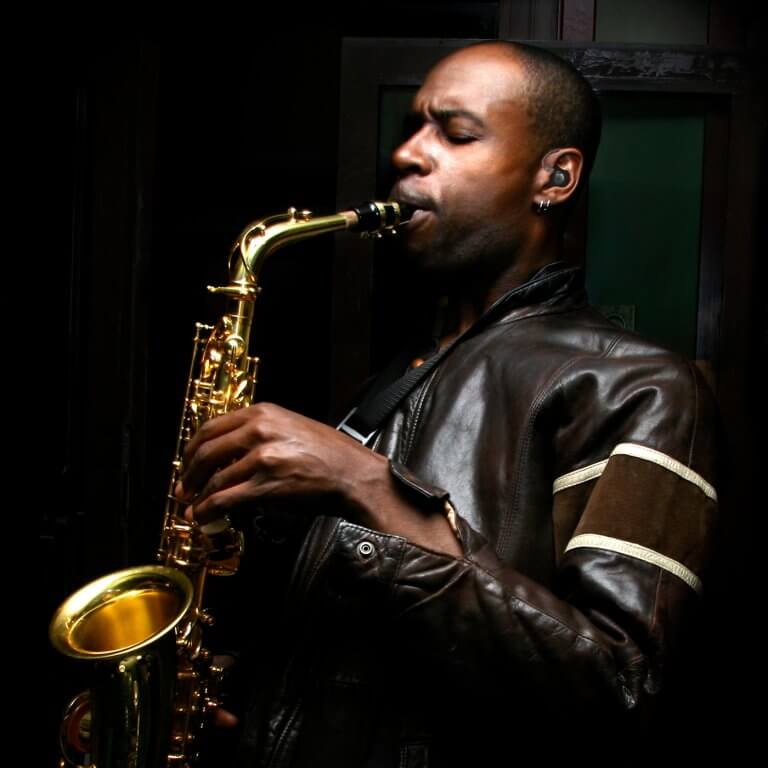
Specifically engineered to preserve sound clarity while reducing harmful noise levels, these earplugs are essential for musicians and performers.
At The Hearing Clinic Partnership, our experienced audiologists want to provide you with the perfect solution tailored to your needs and your lifestyle.
During a hearing protection appointment, they will begin with a consultation to discuss your needs and examine your ears. They will evaluate factors like your noise exposure levels, work environment, and personal preferences to determine the most suitable type of hearing protection for you
If custom-moulded earplugs are recommended, the audiologist will take precise impressions of your ear canals to create earplugs moulded to fit your ears perfectly for maximum comfort and noise protection. You will also receive thorough training on properly inserting, wearing, cleaning, and maintaining your specific hearing protection devices to ensure effective use.

Book a free hearing protection consultation at your preferred practice

Call us on 0800 52 00 546. Lines are open Monday – Saturday 08:30 – 17:00.
Hearing protection is recommended for any noise levels above 85 dB. Prolonged exposure to sounds at or above this level can cause permanent hearing damage. Common sources of harmful noise include:
Using earplugs or ear defenders in noisy environments can help protect against hearing loss.
Custom-moulded ear plugs provide the most effective hearing protection. They are made from an impression of your ear canal, ensuring a perfect fit and superior noise-blocking capabilities compared to disposable or one-size-fits-all options.
The most affordable option we offer is £84, while our most commonly purchased custom plugs are £149. Customers who purchase the ear plugs directly through us do not need to pay the separate £30 fee for taking ear impressions. Despite being more expensive than disposable plugs, custom moulded ear plugs provide a tailored, personalised fit to your ear canals along with superior noise isolation. This makes them an excellent investment for reliable, comfortable hearing protection suited to your specific needs.
To properly insert ear plugs, follow these steps:
Proper insertion is crucial for effective noise protection.
Ear plugs should be cleaned regularly. Avoid using harsh chemicals or submerging them completely. To clean ear plugs:
Regular cleaning prevents ear infections and maintains effectiveness.
Noise-cancelling headphones can help reduce exposure to loud sounds in noisy environments. However, they are not designed as dedicated hearing protection devices. It’s important to use them responsibly and not rely solely on them for hearing protection in extremely loud settings.
For optimal hearing safety in noisy environments, custom-moulded ear plugs are recommended.
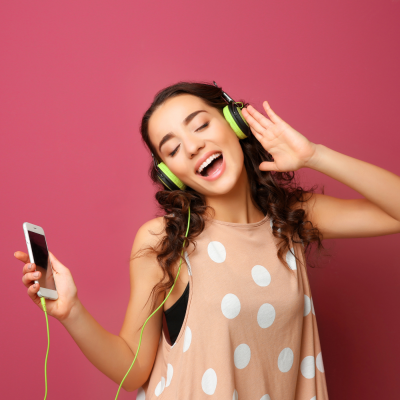
Hearing Care - Oct 2024
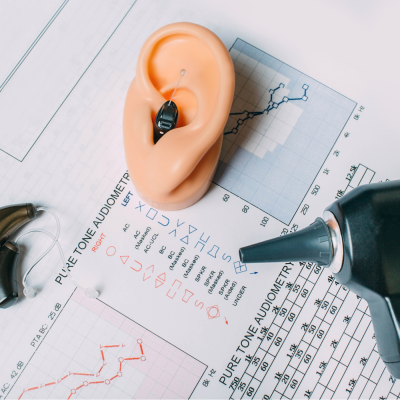
Hearing Care - Jan 2023

Hearing Care - Jan 2023

Hearing Care - Jun 2018